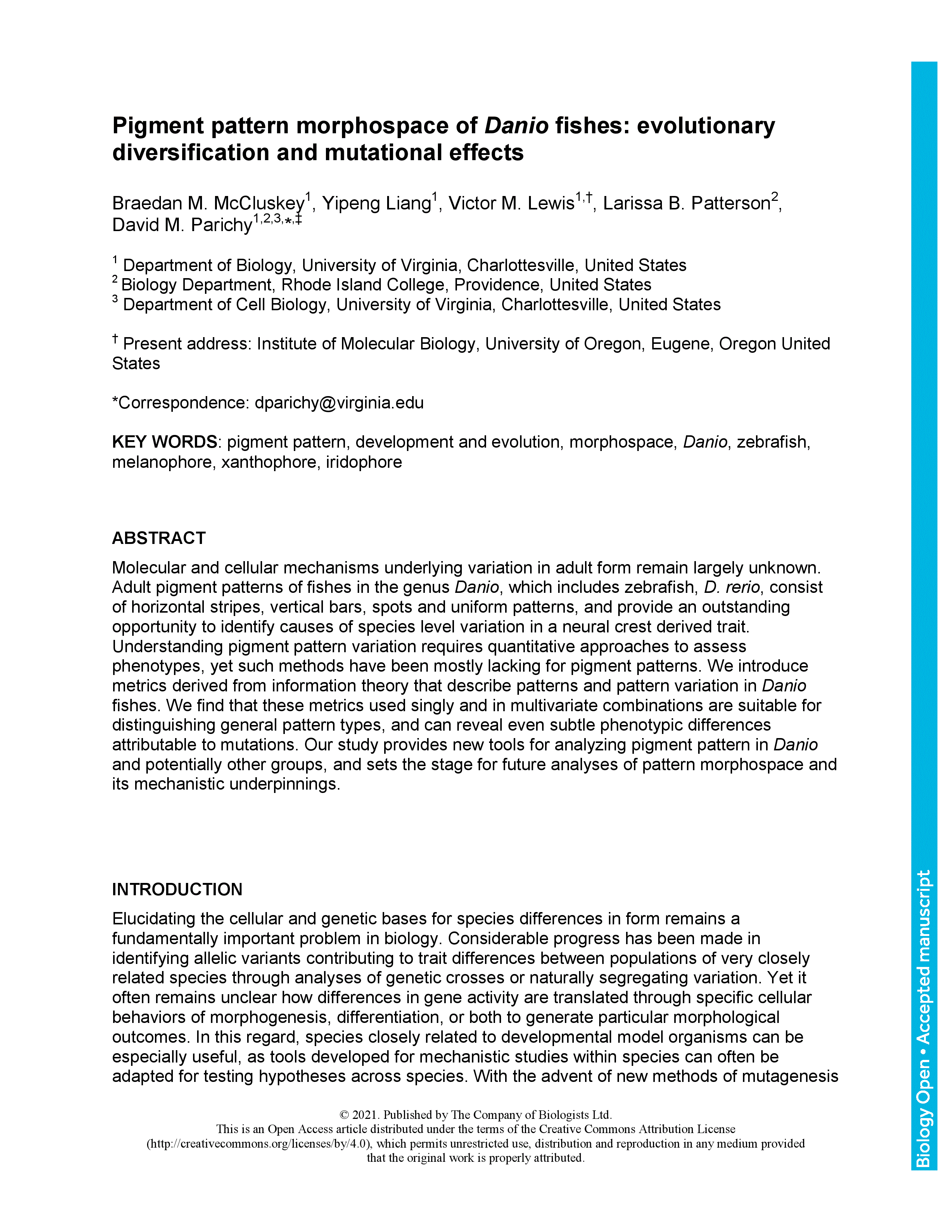Molecular and cellular mechanisms underlying variation in adult form remain largely unknown. Adult pigment patterns of fishes in the genus Danio, which includes zebrafish, D. rerio, consist of horizontal stripes, vertical bars, spots and uniform patterns, and provide an outstanding opportunity to identify causes of species level variation in a neural crest derived trait. Understanding pigment pattern variation requires quantitative approaches to assess phenotypes, yet such methods have been mostly lacking for pigment patterns. We introduce metrics derived from information theory that describe patterns and pattern variation in Danio fishes. We find that these metrics used singly and in multivariate combinations are suitable for distinguishing general pattern types, and can reveal even subtle phenotypic differences attributable to mutations. Our study provides new tools for analyzing pigment pattern in Danio and potentially other groups, and sets the stage for future analyses of pattern morphospace and its mechanistic underpinnings.
Pigment pattern morphospace of Danio fishes: evolutionary diversification and mutational effects
Present address: Institute of Molecular Biology, University of Oregon, Eugene, Oregon USA
- Award Group:
- Funder(s): National Institute of General Medical Sciences
- Award Id(s): R35 GM122471
- Funder(s):
Currently Viewing Accepted Manuscript - Newer Version Available
Braedan M. McCluskey, Yipeng Liang, Victor M. Lewis, Larissa B. Patterson, David M. Parichy; Pigment pattern morphospace of Danio fishes: evolutionary diversification and mutational effects. Biol Open 2021; bio.058814. doi: https://doi.org/10.1242/bio.058814
Download citation file:
Advertisement
Read & Publish Open Access publishing: what authors say

We have had great feedback from authors who have benefitted from our Read & Publish agreement with their institution and have been able to publish Open Access with us without paying an APC. Read what they had to say.
Biology Open 2023 - a year in review

In this Editorial, BiO Editor-in-Chief Dan Gorelick reviews the journal's performance in 2023 and discusses his plans to improve author experience.
The Forest of Biologists
Our Publisher Claire Moulton recently visited the two Woodland Trust UK sites where we are planting new native trees for published Research and Review papers and protecting ancient woodland on behalf of our peer reviewers.
A Year at the Forefront

This series of Review articles aims to highlight the key discoveries, technological innovations, new resources and new hypotheses that have made an impact in a specific biological field during the past year. This publishing opportunity is available to early-career researchers, without a publication charge. Find out about eligibility and how to submit a proposal.
How we support early-career researchers

Biology Open, its sister journals and its not-for-profit publisher, The Company of Biologists, support early-career researchers in numerous ways, helping them grow their network and raise their profile. Find out what we can do to support you.



